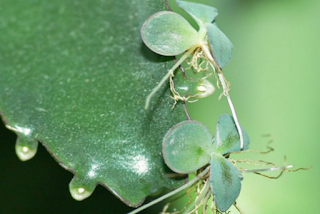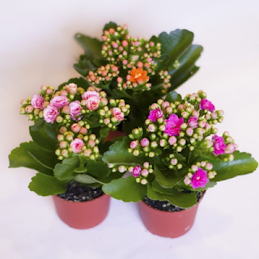Plant propagation involves the formation and development of new individuals which are utilised in the establishment of new plantings. The importance of plant propagation in crop production is that it perpetuates plants as independent units.
There are two main ways or methods of plant propagation. First, propagation by seed (sometimes called the sexual method). The second is vegetative propagation or asexual method.
Table of Contents
1. Propagation by Seed
This method of propagation is employed in the propagation of most self-pollinated crops and other plants and many cross-pollinated ones. Plants or progenies (off springs) resulting from propagation by seed are expected to show some degree of variability with regard to various characteristics, e.g. plant height, vigour or yield, etc., except in the case of the highly homozygous self-pollinated ones which will be uniform with respect to many of their characteristics. Many cereal and legumes crops are propagated by means of seed. Others are such as tobacco, sunflower, cotton, etc.
2. Vegetative Propagation
This method includes all methods of propagation other than seed-propagation which do not depend on the formation of seed. It relies on the use of vegetative structures such as stems, leaves or roots to perpetuate the parent plants. The vegetative parts contain or develop buds which give rise to new individuals. Many flowering and ornamental crops and certain vegetables are propagated vegetative. Sweet potatoes, Irish potatoes and cassava are propagated vegetative.
One main advantage of vegetative propagation is that plants produced result in plants which are an identical copy of the ‘parent’ plant. Thus, from one of the few plants possessing some desirable characteristics, many plants can be produced. Plants which originate from one plant through vegetative propagation are called clones. Provided the environment in which the plants are growing does not change, vegetative propagation plants will breed true to type and variety with regard to such agronomically important characteristics as size (fruit), shape (fruit or seed), quality, time from planting to maturity, keeping or storing qualities and chemical composition (e. g oil content)
Vegetative propagation is used when the plants either does not produce seed or when although the seeds are produced, they are not viable or they do not breed true to type as is the case in out-crossed crop varieties. The use of vegetative propagation may be easier and faster where the seed shows prolonged dormancy. Vegetative propagation is also useful where certain individual plants are more disease resistant than others. Some crops start bearing earlier when they are propagated vegetatively than when they are raised directly from the seed. For example, vegetative propagated citrus comes to fruiting within three to four years compared to eight years in seedling plants.
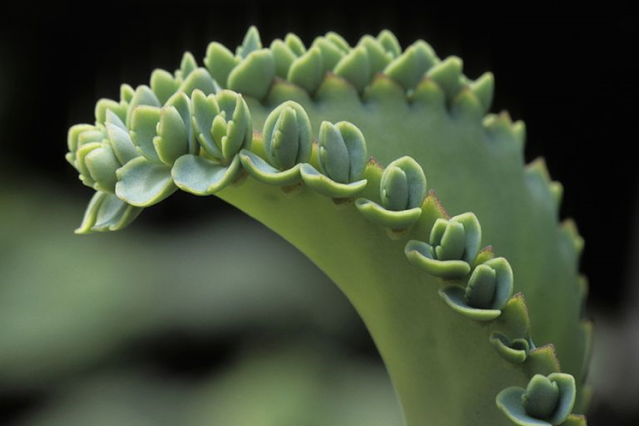 |
| Asexual reproduction of Kalanchoe daigremontiana. Ed Reschke/Photolibrary/Getty Images |
In non-vascular plants, such as mosses and liverworts, vegetative reproductive structures include gemmae and spores. In vascular plants, vegetative reproductive plant parts include roots, stems, and leaves.
Meristem Tissue and Regeneration
Vegetative propagation is made possible by meristemtissue that is commonly found within stems and leaves, as well as at the tips of roots and stems. Meristem tissue contains undifferentiated cells that actively divide by mitosis allowing plant growth. Specialized, permanent plant tissue systems also originate from meristem tissue. It is this ability of meristem tissue to continue to divide that allows for the regeneration that is needed for vegetative propagation to occur.
Types of Vegetative Propagation
Vegetative propagation may be accomplished by natural (natural vegetative propagation) as well as artificial (artificial vegetative propagation) means. Since plants resulting from vegetative propagation are produced asexually from a single parent plant, they are genetic clones of the parent plant. This can have advantages and disadvantages. One advantage of vegetative propagation is that plants with traits that are favourable for a particular environment are repeatedly reproduced.
Commercial crop growers employing artificial vegetative propagation techniques can ensure that favourable traits and product quality are maintained. A major disadvantage of vegetative propagation is that this process does not allow for genetic variation. The plants are genetically identical and are all susceptible to the same plant viruses and diseases that can destroy entire crops.
Natural vegetative propagation
Natural vegetative propagation involves the development of a new plant from parts of a single mature plant. The new plants grow and develop naturally without human intervention. An important ability that is key to enabling vegetative propagation in plants is the ability to develop adventitious roots. These are roots that arise from plant structures other than the root, such as stems or leaves.
Through the formation of adventitious roots, new plants may develop from extensions of the stems, roots, or leaves of a parent plant. Modified stems are most often the source of vegetative propagation in many plants. Vegetative plant structures that arise from plant stems include rhizomes, runners, bulbs, tubers, corms, and buds. Vegetative structures emanating from roots include buds and tubers. Plantlets are vegetative structures that emerge from plant leaves.
Vegetative propagation may occur naturally through the development of rhizomes. Rhizomes are modified stems that typically grow horizontally along the ground surface or underground. Rhizomes are storage sites for substances such as proteins and starches. As rhizomes extend, roots and shoots may arise along certain intervals of the rhizome and develop into new plants. Certain grasses, lilies, irises, and orchids propagate in this manner. Edible plant rhizomes include ginger and turmeric.
Runners
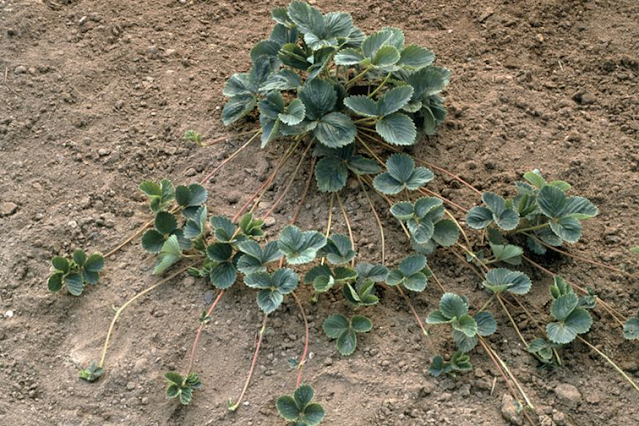 |
| Fragaria (Wild Strawberry) – Dorling Kindersley/Getty Images |
Runners, sometimes called stolons, are similar to rhizomes in that they exhibit horizontal growth at or just below the soil surface. Unlike rhizomes, they originate from existing stems. As runners grow, they develop roots and shoots from buds located at nodes or at runner tips. Intervals between nodes (internodes) are more widely spaced in runners than in rhizomes. New plants arise at nodes where roots and shoots develop. This type of propagation is seen in strawberry plants and currants.
Bulbs
 |
| Plant Bulb. Scott Kleinman/Photodisc/Getty Images |
Bulbs are round, swollen parts of a stem that are typically found underground. Within these organs of vegetative propagation lies the central shoot of a new plant. Bulbs consist of a bud that is surrounded by layers of fleshy, scale-like leaves. These leaves are a source of food storage and provide nourishment for the new plant. Examples of plants that develop from bulbs include onions, garlic, shallots, hyacinths, daffodils, lilies, and tulips.
Tubers
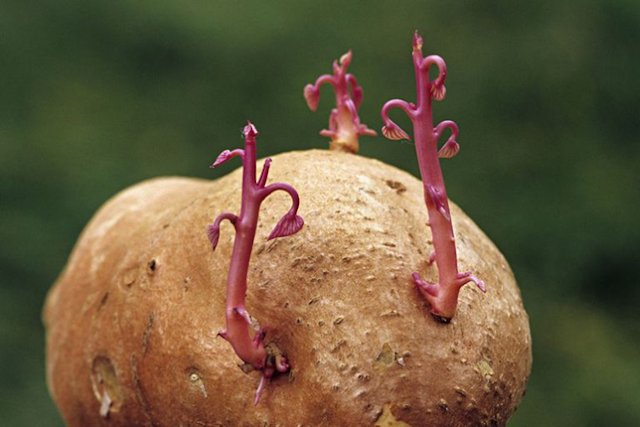 |
| Sweet potato sprouting new plants from the eyes. Ed Reschke/Photolibrary/Getty Images |
Tubers are vegetative organs that may develop from stems or roots. Stem tubersarise from rhizomes or runners that become swollen from storing nutrients. The upper surface of the tuber produces the new plant shoot system (stems and leaves), while the bottom surface produces the root system. Potatoes and yams are examples of stem tubers. Root tubers originate from roots that have been modified to store nutrients. These roots become enlarged and may give rise to a new plant. Sweet potatoes and dahlias are examples of root tubers.
Corms
 |
| Crocus sativus Corms. Chris Burrows/Photolibrary/Getty Images |
Corms are enlarged, bulb-like underground stems. These vegetative structures store nutrients in fleshy, solid stem tissue and are typically surrounded externally by papery scale-like leaves. Due to their external appearance, corms are commonly confused with bulbs. The major difference is that corms consist internally of solid tissue, while bulbs consist of layers of scale-like leaves. Corms produce adventitious roots and possess buds that develop into new plant shoots. Plants that develop from corms include crocus, gladiolus, and taro.
Suckers
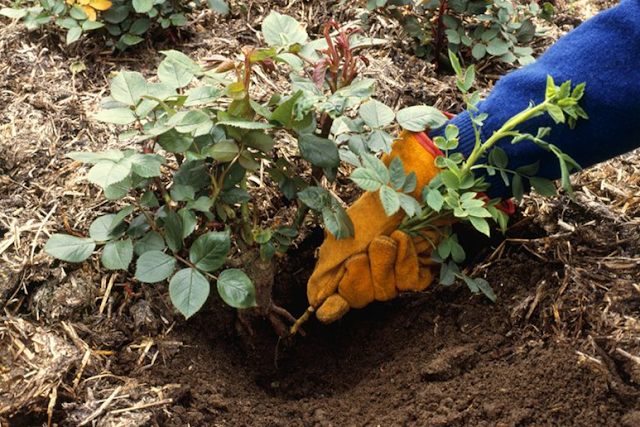 |
| Roses can propagate through a sucker or stolon. Dorling Kindersley/Getty Images |
Suckers or root sprouts are plant shoots that arise from buds on underground roots or stems. Suckers may also sprout from buds near the base of the parent plant and can grow into new plants. A number of shrubs and trees propagate through sucker production. Some examples include apple trees, cherry trees, banana trees, hazel shrubs, roses, raspberries and gooseberries.
Plantlets
Figure: Kalanchoe pinnata (mother of thousands) undergoes vegetative reproduction by producing plantlets along the plant leaf margins. These plantlets drop to the ground and can grow into a new plant. Stefan Walkowski/Wikimedia Commons/CC
Plantlets are vegetative structures that develop on some plant leaves. These miniature, young plants arise from meristem tissue located along leaf margins. Upon maturity, plantlets develop roots and drop from leaves. They take root in the soil forming new plants. An example of a plant that propagates in this manner is Kalanhoe or mother of thousand plant. Plantlets may also develop from the runners of certain plants such as spider plants.
